Deep Throat (film)
6.1 /10 3 Votes
Duration Language English | 5.2/10 IMDb Director Jerry Gerard Country United States | |||||||||||||||||||||||||||||||||
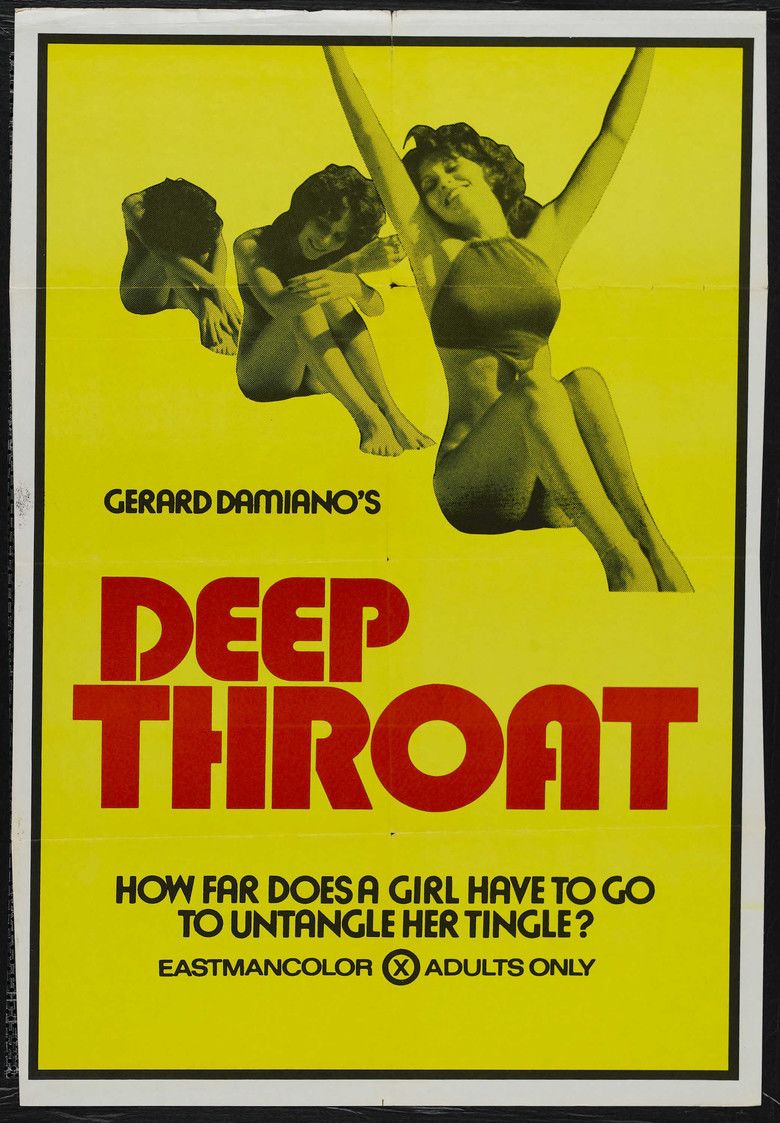 | ||||||||||||||||||||||||||||||||||
Release date June 12, 1972 (1972-06-12) Tagline How far does a girl have to go to untangle her tingle? Similar Memphis Cathouse Blues, Memories Within Miss Aggie, Obsessed (1977 film) | ||||||||||||||||||||||||||||||||||
Deep throat doctor scene
Deep Throat is a 1972 American pornographic film that was at the forefront of the Golden Age of Porn. The film was written and directed by Gerard Damiano, who was listed in the credits as "Jerry Gerard"; produced by Louis Peraino, credited as "Lou Perry"; and starring Linda Lovelace, the pseudonym given to Linda Susan Boreman.
Contents
- Deep throat doctor scene
- Plot
- Reception
- Porno chic and pop culture influence
- Production and revenue
- Linda Boremans allegations
- Obscenity litigation
- Copyright
- Dutch television
- Identity of Dolly Sharp
- Soundtrack
- Sequels and remakes
- References
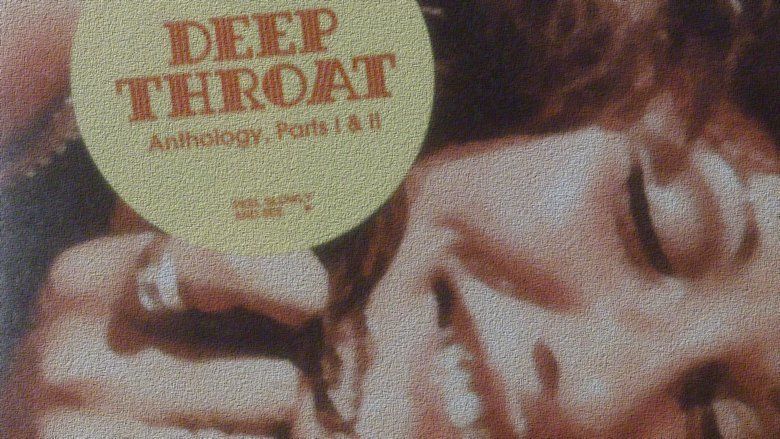
One of the first pornographic films to feature a plot, character development, and relatively high production values, Deep Throat earned mainstream attention and launched the "porno chic" trend, even though the film was banned in some jurisdictions and was the subject of obscenity trials.
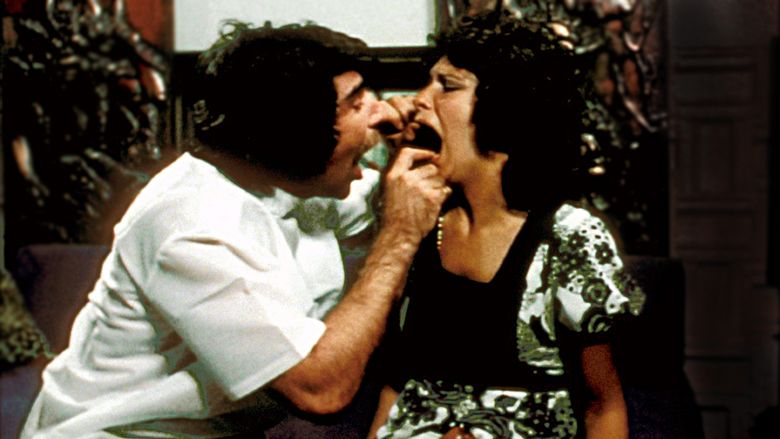
Plot

A sexually frustrated woman, Linda Lovelace (Linda Boreman), asks her friend Helen (Dolly Sharp) for advice on how to achieve an orgasm. After a sex party provides no help, Helen recommends that Linda visit a doctor (Harry Reems). The doctor discovers that Linda's clitoris is located in her throat, and after he helps her to develop her oral sex skills, the infatuated Linda asks him to marry her. He informs her that she can settle for a job as his therapist, performing her particular oral technique—thereafter known as "deep throat"—on various men, until she finds the one to marry. Meanwhile, the doctor documents her exploits while repeatedly having sex with his nurse (Carol Connors). The movie ends with the line "The End. And Deep Throat to you all."
Reception
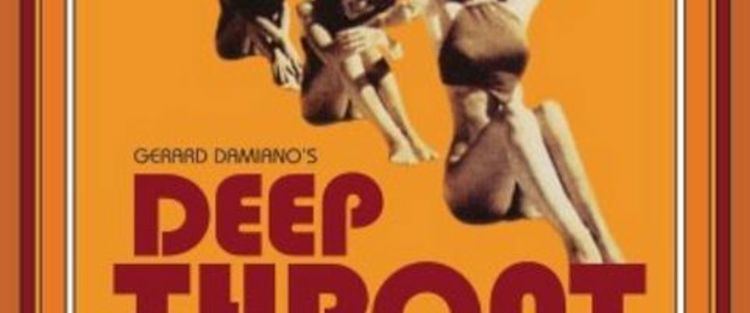
In a March 1973 column, critic Roger Ebert wrote of the film, "It is all very well and good for Linda Lovelace, the star of the movie, to advocate sexual freedom; but the energy she brings to her role is less awesome than discouraging. If you have to work this hard at sexual freedom, maybe it isn't worth the effort."
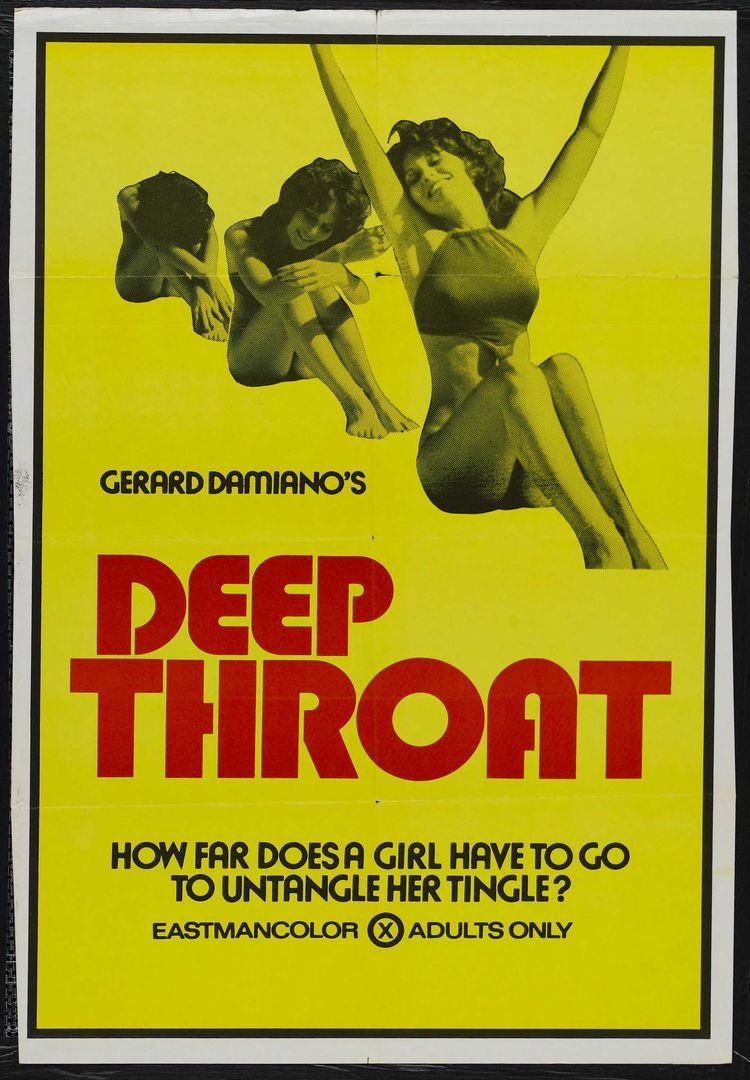
Al Goldstein wrote a rave review in his SCREW magazine, saying "I was never so moved by any theatrical performance since stuttering through my own bar mitzvah."
Porno chic and pop culture influence
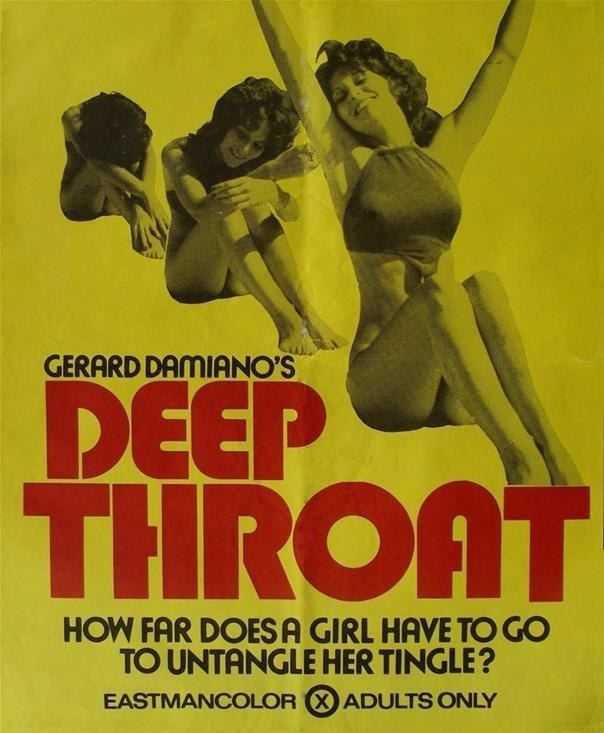
Deep Throat officially premiered at the World Theater in New York on June 12, 1972 and was advertised in The New York Times under the bowdlerized title Throat.
The film's popularity helped launch a brief period of upper-middle class interest in explicit pornography referred to by Ralph Blumenthal of The New York Times as "porno chic". Several mainstream celebrities admitted to having seen Deep Throat, including Martin Scorsese, Brian De Palma, Truman Capote, Jack Nicholson, Johnny Carson, Spiro Agnew, and Frank Sinatra. Barbara Walters mentions having seen the film in her autobiography, Audition: A Memoir. Jimmy McMillan considers it to be his favorite film.
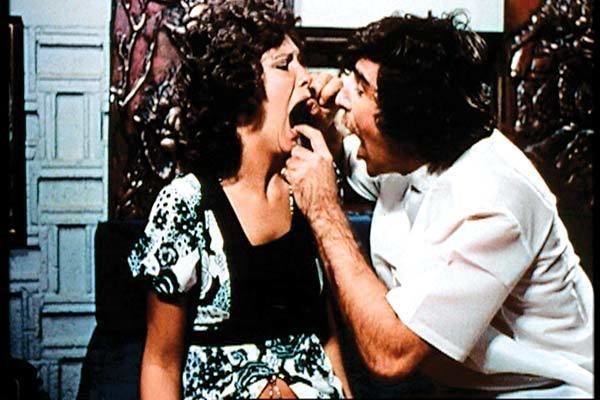
The film's title soon became a pop culture reference, most notably when Howard Simons, the then-managing editor of The Washington Post, chose "Deep Throat" as the code name for a Watergate informant, many years later revealed to be W. Mark Felt.
Production and revenue

The scenes involving Linda Lovelace were shot in North Miami, Florida, over six days in January 1972. The interior scenes were shot at a hotel between 123rd and 124th Streets on Biscayne Boulevard, then known as the Voyager Inn. The building was subsequently converted to a dormitory for Johnson & Wales University. The scenes involving Carol Connors were shot in New York City.
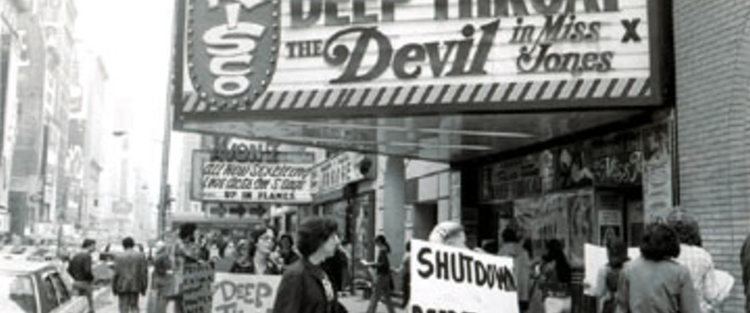
The movie was produced by Louis "Butchie" Peraino, who was listed in the credits as "Lou Perry". Peraino was the owner of Plymouth Distributing, which he later renamed Arrow Film and Video. The entire production cost of $22,500, and an additional $25,000 for music, was provided by Peraino's father, Anthony Peraino, a member of the Colombo crime family. Gerard Damiano, who had rights to one-third of the profits, was reportedly paid a lump sum of $25,000 once the film became popular and was forced out of the partnership. The film was then distributed by a network of Mafia-connected associates of the Peraino family. Deep Throat grossed $1 million in its first seven weeks of release in 1972, including a then-porn film single-screen record of $30,033 in its opening week at New York City's New World Theatre. The film made a then-record $3 million in its first six months of release and was still ranked among the top 10 highest-grossing films, as ranked by Variety, 48 weeks after its release.
Estimates of the film's total revenues have varied widely: numbers as high as $600 million have been cited, which would make Deep Throat one of the highest-grossing films of all Time. With an average ticket price of $5, box-office takings of $600 million would imply 120 million admissions, an unrealistic figure. Although subsequent sales of the film on home videotape certainly brought additional revenue, the FBI's estimate that the film produced an income of approximately $100 million may be closer to the truth. Michael Hiltzik of the Los Angeles Times also argues for a lower figure in a February 2005 article, pointing out that Deep Throat was banned outright in large parts of the US (as well as many other countries), and only tended to find screenings in a small network of adult theaters in larger urban centers. The directors of Inside Deep Throat responded to the article, suggesting that actual revenues from the film were possibly even higher than the $600 million figure. Hiltzik was unsatisfied with the directors' response, writing that their method was to "construct a seemingly solid box office figure out of layers and layers of speculation piled upon a foundation of sand".
Roger Ebert noted as well in his review of Inside Deep Throat, a 2005 documentary about the film's cultural legacy, that many theaters that screened the film were mob-connected enterprises, which probably also "inflated box office receipts as a way of laundering income from drugs and prostitution" and other illegal activities.
In 2006, a censored edition of the film was released on DVD for fans of pop culture and those wishing to own a non-X-rated copy of the infamous movie. Deep Throat was the first film to be inducted into the XRCO Hall of Fame.
Linda Boreman's allegations
In her first two biographies, Linda Boreman characterized having made the film as a liberating experience; in her third and fourth biographies, both of which were written after she had come out with her stories of sexual abuse, rape, and forced prostitution in the porn business, she charged that she had not consented to many of the depicted sexual acts and that she had been coerced to perform by her abusive then-husband Chuck Traynor, who received $1,250 for her acting. She also claimed that Traynor threatened to kill her, brandishing handguns and rifles to control her.
In 1986, she testified before the Meese Commission, "Virtually every time someone watches that movie, they're watching me being raped." In the Toronto Sun on March 20, 1981 she said, "It is a crime that movie is still showing; there was a gun to my head the entire time." While the other people present on the set did not support the gun charge, both Traynor and Damiano confirmed in interviews that Traynor was extremely controlling towards Boreman and also hit her on occasion. In the documentary Inside Deep Throat, it is claimed that bruises are visible on Boreman's body in the movie.
These allegations were cited in the UK Government's Rapid Evidence Assessment on "The evidence of harm to adults relating to exposure to extreme pornographic material" as part of its plans to criminalize possession of what it termed "extreme pornography".
Obscenity litigation
In various communities in the US, the movie was shown to juries to determine whether it was obscene; the outcomes varied widely and the movie was banned in numerous locations.
In August 1972, after a jury in New York had found the movie not to be obscene, prosecutors decided to charge Mature Enterprises, the company that owned the World Theater, for promotion of obscene material, taking them to trial in December. During the trial, a psychiatrist testified that the film portrayed acts that were "well within the bounds of normal behavior". A film critic testified the movie had social value because it showed sympathy for female desires, because the script contained humor and because it was filmed "with clarity and lack of grain". Conversely, in response to a claim the film was a spoof of sexual behavior, a New York University professor said, "I do not see how you can spoof fellatio by showing continuous performance of fellatio." On March 1, 1973, Judge Joel J. Tyler ruled Deep Throat to be obscene, issuing his opinion on the film as "this feast of carrion and squalor", "a nadir of decadence" and "a Sodom and Gomorrah gone wild before the fire". Judge Tyler fined Mature Enterprises $100,000, which was later reduced on appeal. The ruling would inadvertently contribute to the film becoming perhaps the most popular X rated movie of all time.
In 1976, there was a series of federal cases in Memphis, Tennessee, where over 60 individuals and companies, including the Perainos and actor Harry Reems, were indicted for conspiracy to distribute obscenity across state lines. Damiano and Lovelace were granted immunity in exchange for testimony. The Hon. Harry W. Wellford was the Federal District Court judge who heard the case. The trials ended in convictions. This was the first time that an actor had been prosecuted by the federal government on obscenity charges (Lenny Bruce had been prosecuted in the 1960s by local authorities.) Reems became a cause célèbre and received considerable support from Hollywood circles. On appeal, he was represented by Alan Dershowitz, and his conviction was overturned: the Miller test had been applied in his case. The Perainos and some other major players connected to organized crime received short prison sentences.
In 1995, while in Las Vegas for an obscenity trial, Louis Peraino met and befriended Raymond and Treasure Pistol, local adult club owners, and sold the Pistols the rights to his entire library, including Deep Throat.
In the UK, the movie was banned upon release, and the ban was upheld by the courts 10 years later. The uncut DVD of the movie was finally given an R18 rating in 2000, which allowed it to be sold in licensed sex shops in the UK.
Copyright
Deep Throat was released without a copyright notice. Because Peraino had used four wall distribution for all of Deep Throat's releases, that left the potential for the film to be classified as an unpublished work, preventing it from falling into the public domain. Peraino sold the rights to the film to Arrow Productions for home video release (including a copyright notice) at some point prior to 2009. Despite Arrow holding the rights, rival pornography distributor VCX began distributing Deep Throat as retaliation for Arrow's distribution of Debbie Does Dallas and The Devil in Miss Jones, two films VCX asserted were under their copyright. (In the former case, Debbie Does Dallas was determined to be public domain in a 1987 court ruling.) In order to prevent VCX from challenging the copyright on Deep Throat, Arrow Productions agreed in 2011 to voluntarily stop distributing Debbie Does Dallas and The Devil in Miss Jones, thus leaving their copyright statuses unresolved.
Dutch television
On February 23, 2008, the Netherlands Public Broadcasting corporations VPRO and BNN screened Deep Throat on national television as part of a themed night on the history of pornographic films, and the influence of pornography in youth culture in the Netherlands. Although the film aired after 10 p.m., following a guideline for adult television, and was embedded in a discussion program, several political parties (especially Dutch cabinet member party ChristianUnion) were clamoring for steps to be taken to prevent airing. The Minister of Education and Media, Ronald Plasterk, declared that he could not and did not want to forbid the airing of the film. The movie was seen by 907,000 viewers.
Identity of "Dolly Sharp"
In December 2014 The Rialto Report, a web site devoted to the history of the so-called Golden Age of Porn, made the surprise announcement that supporting actress Dolly Sharp, who had vanished into obscurity shortly after the release of Deep Throat, was in fact Helen Wood (1935-1998), a former Broadway performer who, as a teenager, had a major role in the 1953 Hollywood musical Give a Girl a Break.
Soundtrack
An original Soundtrack album for the film was released in 1972. Few copies exist today and when on the market, they have sold for as much as US$300. The album contains both instrumental and vocals tracks as well as short snippets of dialog from the film (indicated with quotations in the list below). All artists are unknown. A remixed and remastered CD and LP version is available from Light in the Attic Records (see links). Director Gerard Damiano is said to have adjusted the film's intimate scenes to align with various musical signals. The opening of the film features an instrumental piece reminiscent of the melody from the 1968 easy listening chart-topper, "Do You Know the Way to San Jose."
Sequels and remakes
The original sequel to Deep Throat – Deep Throat Part II – was written and directed by Joseph W. Sarno and featured the original stars Linda Lovelace and Harry Reems. Shot in New York City in early 1973, it was released in New York in February 1974 with an MPAA "R" rating. Although attributed to Damiano Films, Deep Throat director Gerard Damiano was not involved with its production. The film was produced, however, by Deep Throat producer Louis Peraino, who had in the meantime founded the mainstream distribution company Bryanston Films. The version of Deep Throat Part II currently available on DVD is bowdlerized to the point where the film contains virtually no sexual content of any sort, probably a byproduct of its efforts to receive an MPAA R rating at the time of its release. An Italian DVD release of the film, however, contains its original softcore sex scenes. It has long been claimed that Deep Throat Part II was originally shot with the intention of releasing it as a hardcore feature and that hardcore sequences shot for the film were stolen while the film was in post-production. Director Joe Sarno, however, has insisted in interviews that this is not the case.
Vivid Entertainment owner Steven Hirsch told XFANZ reporters at the FAME Awards in June 2008 that the company is producing a remake of Deep Throat. The making of this film was the subject of the Showtime original series Deeper Throat.
Vivid had planned to release its remake but Arrow Productions, the copyright owner did not like the deviation from the original storyline or the manner in which the film was directed and cast. They then withdrew permission to make the remake to Deep Throat, and forced Steve Hirsch to remarket and edit his movie for copyright purposes.
Hirsch changed the name of the title to Throat: A Cautionary Tale, and it was released in March 2009.
References
Deep Throat (film) WikipediaDeep Throat (film) IMDb Deep Throat (film) themoviedb.org
